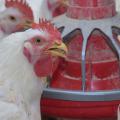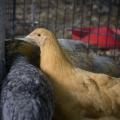Trouble Shooting Failures with Egg Incubation
When incubation of eggs fails, indications are often available that a well trained professional uses for diagnosing the causes for failure. The information listed below includes the more common symptoms for incubation failures, the causes for each symptom, and the recommended corrective measures. A good incubation publication is available from your local County Agent's office or the Poultry Extension Department at Mississippi State University to help in analyzing the incubation procedure. It explains the artificial incubating process more in detail. Ask for MCES Publication 1182, Hatching Quality Chicks.
Symptoms of incubation/breeder management problems include:
- Clear eggs with no visible embryonic development.
- Blood rings in incubated eggs.
- Many dead embryos at an early stage.
- Chicks fully formed, but dead without pipping.
- Pipped eggs, but died without hatching.
- Early hatching.
- Late hatching or not hatching uniformly.
- Sticky embryos.
- Embryos sticking or adhering to shell.
- Crippled and malformed chicks.
- Abnormal, weak, or small chicks.
- Chicks with labored breathing.
- Large, soft-bodied mushy chicks.
- Rough or unhealed navels on chicks.
- Short down on chicks.
- Excessive yellow down color.
Publications
News
STARKVILLE, Miss. -- Until an avian flu vaccine for chickens or other alternative is federally approved, commercial poultry operations in the U.S.
STARKVILLE, Miss. -- If egg prices have seemed higher than ever lately, it’s because they are, and consumers can place much of the blame squarely at the feet of the ongoing bird flu outbreak.
With highly pathogenic avian influenza, or HPAI, in the environment in Mississippi, owners of backyard flocks have to take extra steps to keep their chickens healthy.
Avian influenza poses an extremely low risk to human health and none to food safety in Mississippi, but its presence poses a risk to backyard flocks and the state’s $3 billion commercial poultry industry.







